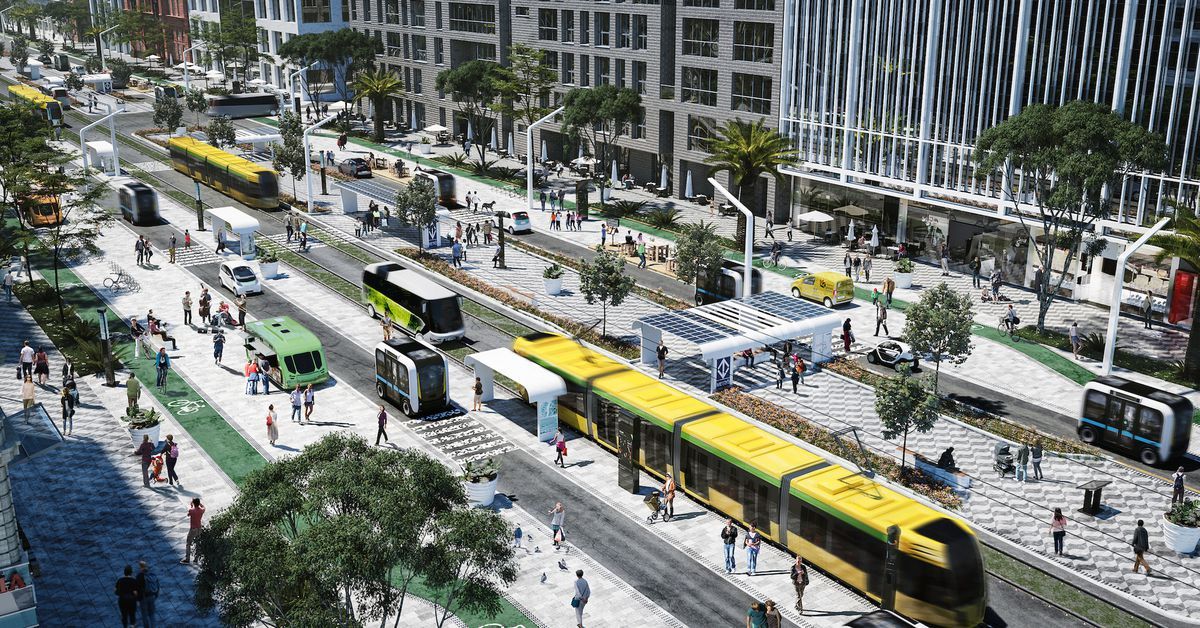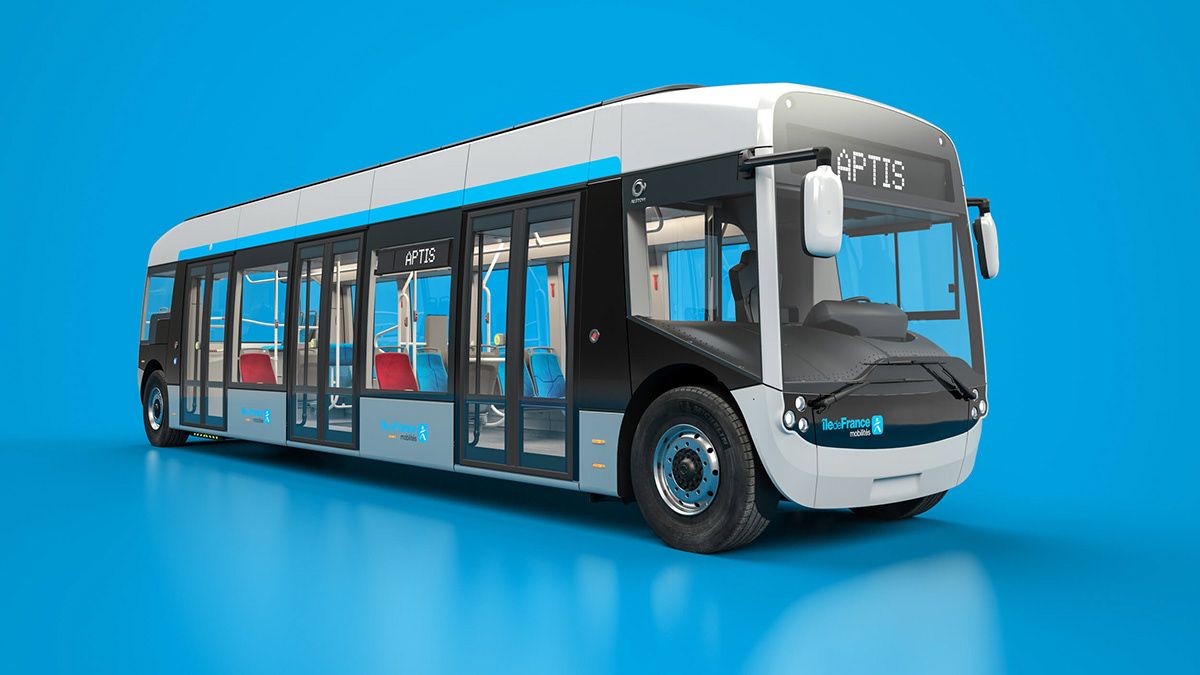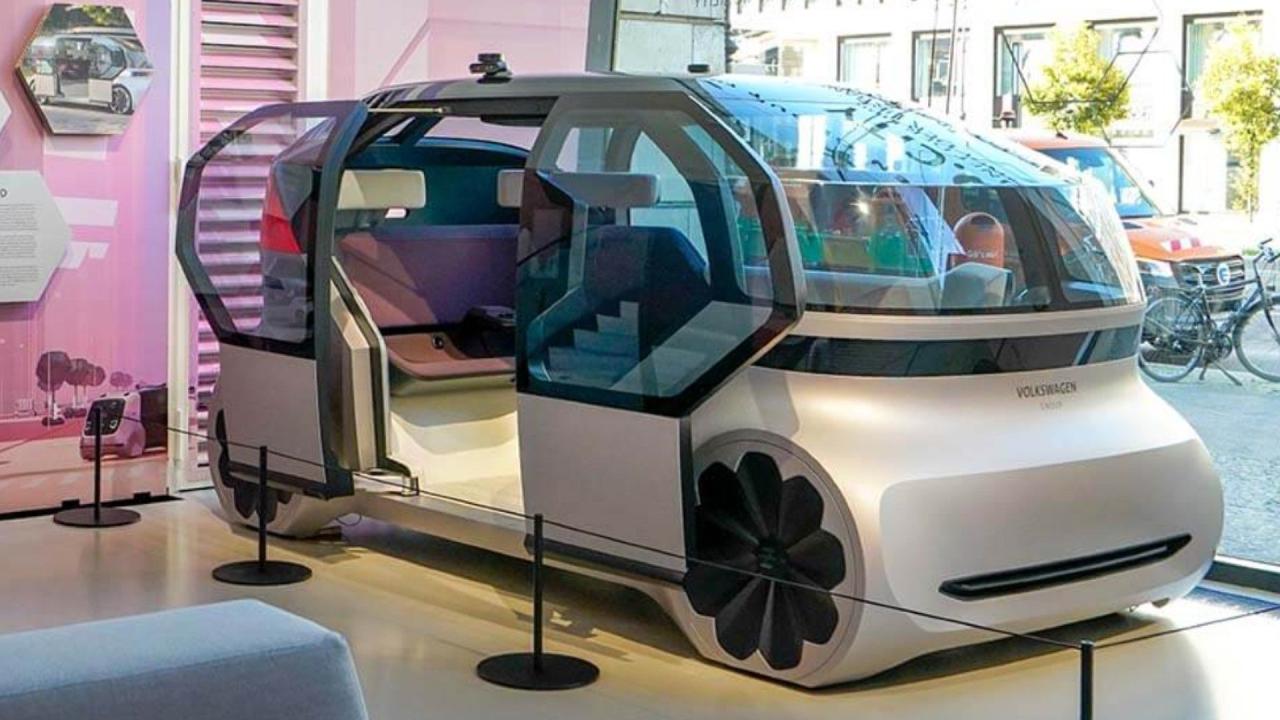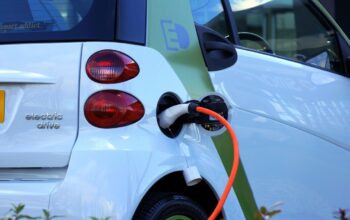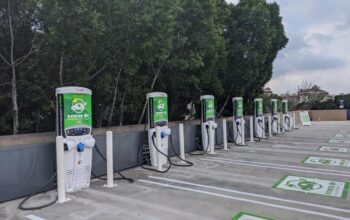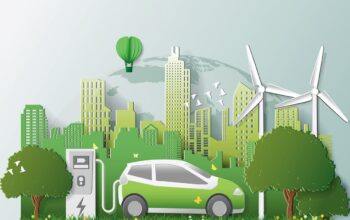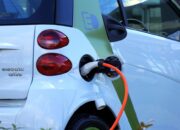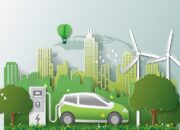The pulsating heart of modern civilization lies within its cities. As urban populations burgeon and economies expand, the challenge of efficient and sustainable urban mobility becomes increasingly critical. Far from a mere convenience, how people and goods move within cities profoundly impacts economic productivity, environmental quality, and the overall well-being of residents. We’re on the cusp of a profound transformation in how we navigate our urban landscapes, driven by technological innovation, shifting consumer preferences, and an urgent need for sustainability. This article delves into the evolving landscape of urban mobility, exploring its current challenges, the innovative solutions emerging, and the profound implications for cities and their inhabitants.
The Pressing Need for Urban Mobility Transformation
For decades, the dominant paradigm of urban transport has been the private internal combustion engine vehicle. While offering unparalleled personal freedom, this model has led to a myriad of complex problems that now demand urgent attention:
A. Traffic Congestion
The most visible and frustrating consequence of conventional urban mobility is traffic congestion. Billions of hours are lost annually in gridlock, leading to:
- Economic Losses: Reduced productivity, late deliveries, and increased operational costs for businesses.
- Wasted Fuel: Vehicles idling in traffic consume fuel inefficiently, contributing to higher emissions.
- Mental and Physical Stress: Commuting in heavy traffic takes a significant toll on drivers and passengers, impacting mental health and increasing stress levels.
B. Environmental Degradation
Conventional vehicles, particularly those powered by fossil fuels, are major contributors to air pollution and greenhouse gas emissions. This leads to:
- Respiratory Illnesses: Particulate matter and harmful gases exacerbate conditions like asthma and contribute to lung diseases.
- Climate Change: Carbon emissions from vehicles are a significant driver of global warming.
- Noise Pollution: Constant traffic noise impacts quality of life and can have adverse health effects.
C. Resource Intensive Infrastructure
Relying heavily on private cars necessitates vast amounts of urban space for roads, highways, and parking lots. This leads to:
- Urban Sprawl: Cities expand outwards, consuming valuable land and increasing commute distances.
- High Infrastructure Costs: Building and maintaining extensive road networks and parking facilities requires massive public investment.
- Reduced Green Spaces: More concrete often means less room for parks, trees, and other vital green infrastructure.
D. Social Equity and Accessibility Issues
The car-centric model often disadvantages those without access to a private vehicle, including:
- Low-Income Households: The cost of vehicle ownership (purchase, insurance, fuel, maintenance) can be prohibitive.
- Elderly and Disabled Individuals: Limited access to reliable public transport or ride-sharing options can restrict their mobility and independence.
- Dependence on Limited Public Transport: In many cities, public transport networks are insufficient, making car ownership a necessity rather than a choice.
Pillars of Evolving Urban Mobility Solutions
Addressing these multifaceted challenges requires a holistic approach, leveraging technology, policy, and shifts in consumer behavior. Several key pillars are emerging as foundational to the future of urban mobility:
A. Electrification of Transport
The transition from fossil-fuel-powered vehicles to electric vehicles (EVs) is perhaps the most significant shift. This encompasses:
- Electric Cars: With advancements in battery technology, range, and charging infrastructure, electric passenger vehicles are becoming increasingly viable and popular. Governments worldwide are setting targets for phasing out internal combustion engine (ICE) vehicle sales.
- Electric Buses and Trams: Public transport fleets are rapidly electrifying, offering quieter, emission-free transit for large numbers of people.
- Electric Micromobility: E-scooters, e-bikes, and electric mopeds offer efficient and emission-free options for short-distance travel, addressing the “last-mile” problem.
- Charging Infrastructure Development: The widespread adoption of EVs hinges on a robust and accessible charging network, including public chargers, workplace chargers, and residential solutions. Innovation in fast-charging and wireless charging is accelerating.
B. Shared Mobility Services
The concept of ownership is being decoupled from usage through various shared mobility models:
- Ride-Sharing and Ride-Hailing: Services like Uber and Lyft have revolutionized personal transport, offering on-demand rides. These services can reduce the need for private car ownership and potentially optimize vehicle utilization.
- Car-Sharing: Companies offer short-term car rentals, allowing users to access a vehicle for a few hours or a day without the commitment of ownership. This reduces parking demand and car dependency.
- Bike-Sharing and Scooter-Sharing: Dockless and dock-based systems provide convenient options for short trips, reducing congestion and promoting active transport.
- Pooling and Vanpooling: Encouraging multiple passengers to share a single vehicle for commutes reduces the number of vehicles on the road.
C. Autonomous Vehicles (AVs)
Self-driving vehicles promise to fundamentally reshape urban mobility by enhancing safety, efficiency, and accessibility.
- Improved Safety: Eliminating human error, which is responsible for the vast majority of accidents, could dramatically reduce road fatalities and injuries.
- Optimized Traffic Flow: AVs can communicate with each other and with infrastructure, leading to smoother traffic flow, reduced congestion, and more efficient use of road space.
- Increased Accessibility: AVs could provide mobility options for individuals unable to drive, such as the elderly or disabled.
- New Service Models: Autonomous ride-hailing fleets could offer highly convenient and potentially more affordable transport, further reducing the need for private vehicle ownership.
- Parking Efficiency: Self-parking AVs could drop off passengers and then find parking spaces further away or in automated garages, freeing up prime urban real estate.
D. Integrated and Multimodal Transport
The future of urban mobility isn’t about replacing one mode with another, but rather about seamlessly integrating diverse options. Multimodal transport emphasizes combining different modes (e.g., walking, cycling, public transport, ride-sharing) for a single journey.
- Mobility as a Service (MaaS): MaaS platforms integrate various transport services (public transit, ride-sharing, bike-sharing, car-sharing) into a single, user-friendly app. Users can plan, book, and pay for their entire journey through one interface, optimizing convenience and potentially cost.
- Smart Ticketing Systems: Universal payment systems allow seamless transitions between different transport modes without the need for multiple tickets or passes.
- Real-Time Information Systems: Providing accurate, real-time data on public transport schedules, traffic conditions, and available shared mobility options empowers users to make informed decisions.
- Unified Data Platforms: Cities are building data platforms that aggregate information from various transport providers, enabling better urban planning and management.
E. Active and Sustainable Transport
Encouraging walking and cycling is crucial for creating healthier, more livable cities.
- Pedestrian-Friendly Infrastructure: Wider sidewalks, safe crossings, and pedestrian zones encourage walking.
- Dedicated Cycling Lanes: Expanding safe and connected cycling networks makes cycling a viable and attractive option for commuters and leisure riders.
- Green Spaces and Urban Planning: Designing cities with walkable distances to amenities and integrating green spaces encourages active lifestyles.
- Traffic Calming Measures: Reducing vehicle speeds and volumes in residential areas makes streets safer and more pleasant for pedestrians and cyclists.
The Role of Technology in Driving Transformation
Technology is not just an enabler; it’s the very catalyst of this urban mobility revolution.
A. Big Data and Analytics
The sheer volume of data generated by connected vehicles, public transport systems, shared mobility platforms, and smart city sensors provides unprecedented insights.
- Traffic Prediction: AI algorithms can analyze historical and real-time data to predict traffic patterns, enabling proactive traffic management and route optimization.
- Demand Forecasting: Understanding mobility patterns helps optimize the deployment of shared vehicles, public transport routes, and charging infrastructure.
- Urban Planning: Data-driven insights inform decisions on road design, public transport expansion, and land use planning.
B. Internet of Things (IoT)
IoT devices are embedded throughout the urban environment, collecting data and enabling connectivity.
- Smart Traffic Lights: IoT-enabled traffic signals can dynamically adjust timing based on real-time traffic flow, reducing congestion.
- Connected Vehicles: Vehicles equipped with IoT sensors can communicate with each other (V2V), with infrastructure (V2I), and with the cloud, enabling features like collision avoidance and optimized routing.
- Smart Parking: Sensors in parking spaces can provide real-time availability information, guiding drivers to open spots and reducing circling for parking.
C. Artificial Intelligence (AI) and Machine Learning (ML)
AI and ML are the brains behind many advanced mobility solutions.
- Autonomous Driving Systems: AI algorithms power the perception, decision-making, and control systems of self-driving vehicles.
- Route Optimization: ML models analyze traffic, weather, and demand to provide the most efficient routes for ride-sharing and delivery services.
- Predictive Maintenance: AI can predict when vehicle components are likely to fail, enabling proactive maintenance and reducing downtime for fleets.
D. 5G Connectivity
The rollout of 5G networks provides the low latency and high bandwidth necessary for many advanced urban mobility applications.
- Real-Time Data Exchange: 5G enables instantaneous communication between vehicles, infrastructure, and the cloud, critical for autonomous driving and smart traffic management.
- Enhanced User Experience: Faster data speeds improve the performance of MaaS apps, real-time navigation, and in-vehicle infotainment systems.
- IoT Device Support: 5G can support a massive number of connected IoT devices, enabling a truly intelligent urban environment.
Challenges and Considerations
Despite the exciting potential, the path to a fully transformed urban mobility system is not without its hurdles.
A. Infrastructure Investment
Implementing new mobility solutions, especially for EVs and AVs, requires significant investment in charging stations, dedicated lanes, and smart infrastructure. Public-private partnerships will be crucial.
B. Regulatory and Policy Frameworks
Existing laws and regulations often lag behind technological advancements. Governments need to create flexible and forward-thinking frameworks for:
- Autonomous Vehicle Operation: Establishing clear rules for testing, deployment, and liability.
- Data Privacy and Security: Protecting sensitive user data collected by mobility services.
- Fair Competition: Ensuring a level playing field for new and traditional transport providers.
C. Public Acceptance and Behavior Change
Shifting away from car ownership and embracing shared, electric, or active transport requires a change in mindset for many individuals. Education, incentives, and a seamless user experience are vital.
D. Cybersecurity Risks
As transport systems become more interconnected and software-driven, the risk of cyberattacks increases. Robust cybersecurity measures are essential to prevent disruptions, data breaches, and safety hazards.
E. Social Equity and Digital Divide
Ensuring that new mobility solutions benefit all segments of society, and do not exacerbate existing inequalities, is paramount. This includes addressing digital literacy and access to technology.
Impact on Urban Planning and Livability
The evolution of urban mobility has profound implications for how cities are designed, managed, and experienced.
A. Reclaiming Urban Space
A reduced reliance on private cars means less demand for parking lots and wide multi-lane roads. This freed-up space can be repurposed for:
- Green Spaces: Parks, community gardens, and urban forests, enhancing environmental quality and public health.
- Pedestrian Zones: Creating vibrant, walkable areas that foster social interaction and support local businesses.
- Affordable Housing: Repurposing land for much-needed residential developments.
- Public Amenities: Libraries, community centers, and recreational facilities.
B. Healthier and More Active Lifestyles
Promoting active transport (walking, cycling) and reducing air pollution directly contributes to improved public health outcomes, reducing rates of respiratory and cardiovascular diseases.
C. Economic Revitalization
Improved mobility can boost local economies by:
- Increasing Accessibility: Making it easier for people to access jobs, shops, and services.
- Supporting Local Businesses: Walkable and bikeable areas often foster thriving local commercial districts.
- Attracting Talent and Investment: Cities with efficient, sustainable mobility systems are more attractive to businesses and skilled workers.
D. Smart City Integration
Urban mobility is a cornerstone of the broader smart city concept, where technology is used to enhance urban services and quality of life. Integrating mobility data with other urban systems (e.g., energy, waste management, public safety) creates a truly intelligent and responsive city.
The Road Ahead
The transformation of urban mobility is not a task for a single entity. It requires unprecedented collaboration among:
- Governments and Policy Makers: To set clear visions, create supportive regulatory frameworks, and invest in foundational infrastructure.
- Private Sector Innovators: To develop cutting-edge technologies, build new services, and drive market adoption.
- Urban Planners and Architects: To design cities that are inherently mobility-friendly and sustainable.
- Citizens: To embrace new behaviors, provide feedback, and advocate for desired changes.
The journey towards more efficient, sustainable, and equitable urban mobility is complex but undeniably vital. By embracing innovation, fostering collaboration, and prioritizing human well-being and environmental health, cities worldwide can evolve into vibrant, connected, and truly livable spaces for generations to come. The wheels of change are turning, and the future of urban journeys promises to be greener, smarter, and more inclusive.

